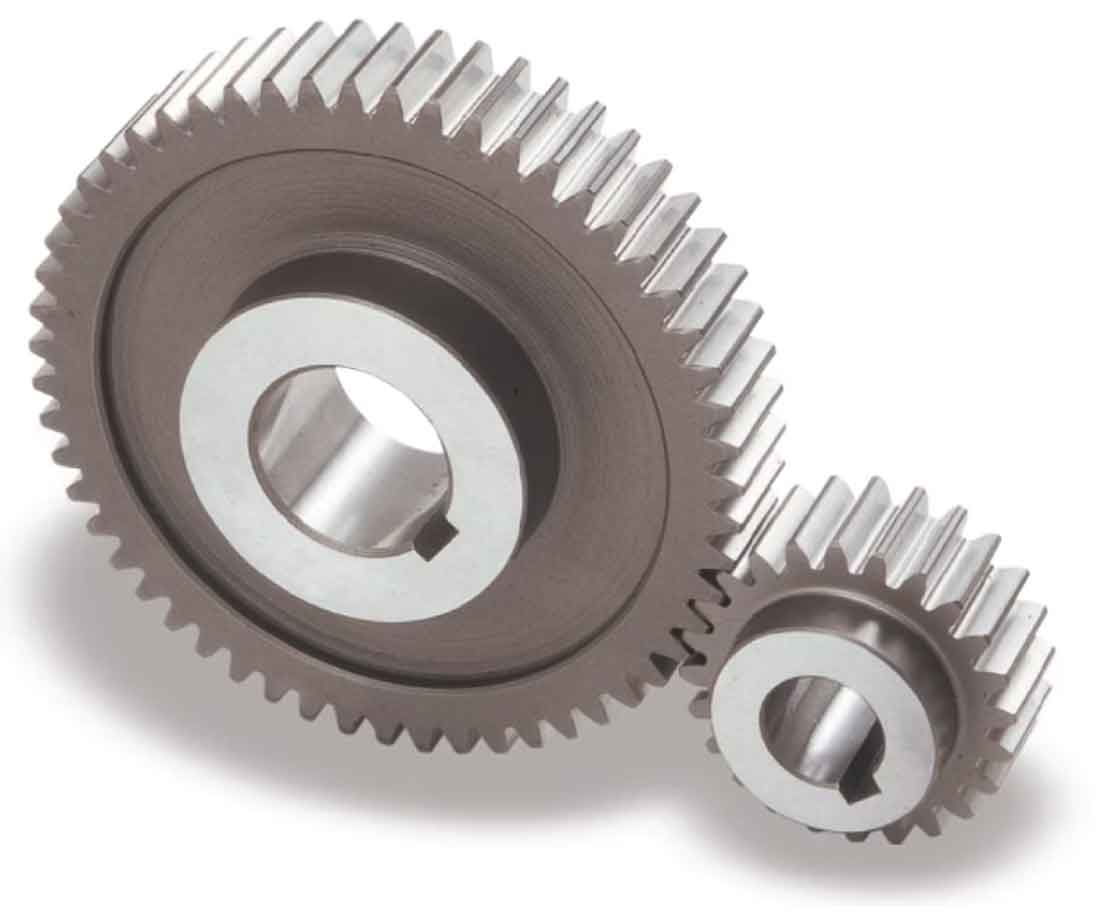
Spur gears are one of the most common types of gears used in various mechanical systems. They consist of cylindrical gears with straight teeth that are parallel to the gear axis. Spur gears are designed to transmit rotational motion and power between parallel shafts.
Design of Spur Gears:
The design of spur gears involves several key parameters:
- Pitch Circle Diameter (PCD): It is the imaginary circle that passes through the center of the gear and represents the effective size of the gear.
- Module or Diametral Pitch (DP): Module is the ratio of the pitch circle diameter to the number of teeth, typically expressed in millimeters. Diametral pitch is the number of teeth per inch of pitch circle diameter. These parameters determine the size of the gear teeth and their spacing.
- Pressure Angle: It is the angle between the direction of the force applied to the gear tooth and a line perpendicular to the gear’s axis. The most common pressure angle is 20 degrees. Higher pressure angles allow for higher load capacities but also generate more noise and vibration.
- Number of Teeth: The number of teeth on a gear determines its speed and torque ratio with another gear in mesh.
Function of Spur Gears:
The primary function of spur gears is to transmit power between parallel shafts while maintaining a constant speed ratio. When the teeth of two spur gears mesh, they transfer rotational motion from the driving gear (input) to the driven gear (output). The teeth engage and disengage smoothly, providing an efficient and reliable means of power transmission.
Applications of Spur Gears:
Spur gears find applications in a wide range of industries and machinery, including:
- Automotive Industry: Spur gears are used in manual transmissions, differentials, and timing gears.
- Industrial Machinery: They are commonly employed in machinery such as gearboxes, conveyors, printing presses, and machine tools.
- Robotics: Spur gears play a vital role in various robotic systems, providing precise motion control.
- Power Generation: They are used in wind turbines, where they transmit the mechanical power from the rotor to the generator.
- Home Appliances: Spur gears are found in appliances like washing machines, mixers, and food processors, where they help in transmitting motion and power.
- Clocks and Watches: Traditional mechanical clocks and watches often use spur gears to control the movement of the hands.
It’s important to note that spur gears have limitations, including high noise levels and the inability to transmit power between non-parallel shafts. In such cases, other gear types like helical gears or bevel gears may be more suitable.
